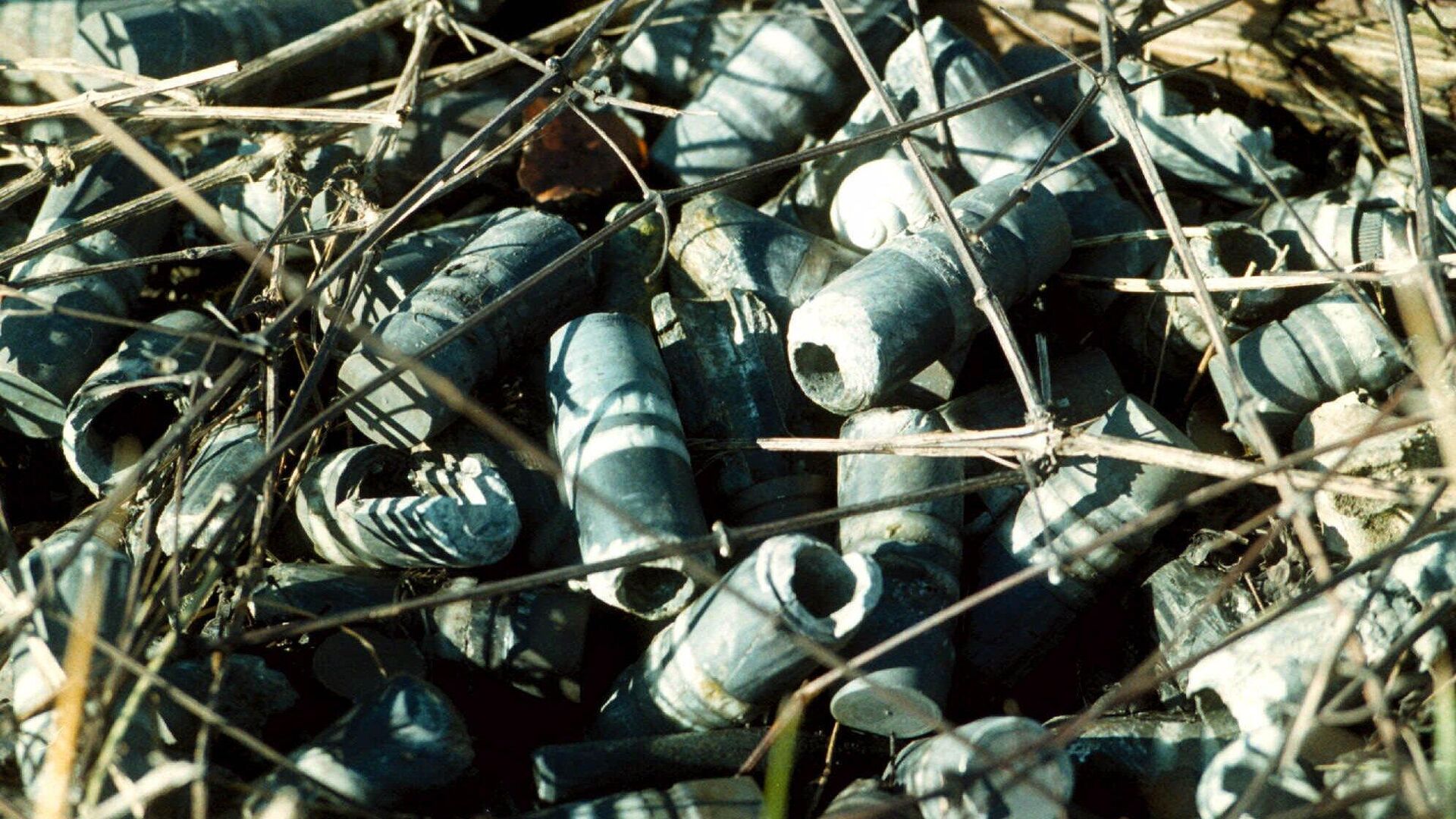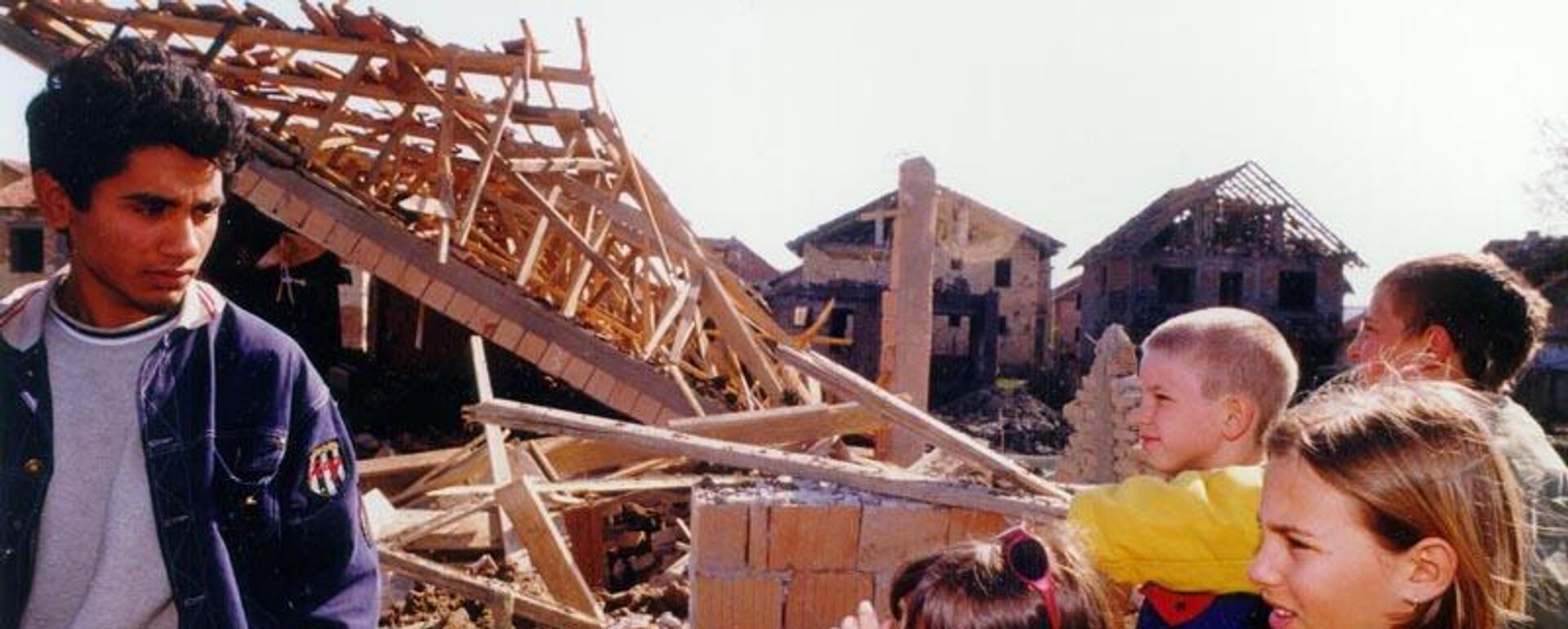https://sputnikglobe.com/20230325/nato-unleashed-tons-of-depleted-uranium-on-yugoslavia-toxicologist-1108766836.html
NATO Unleashed Tons of Depleted Uranium on Yugoslavia: Toxicologist
NATO Unleashed Tons of Depleted Uranium on Yugoslavia: Toxicologist
Sputnik International
Depleted uranium (DU) munitions have become a hot topic of late after London announced its intent to supply them to Kiev to be used in the ongoing conflict in Ukraine.
2023-03-25T10:25+0000
2023-03-25T10:25+0000
2023-03-25T10:25+0000
world
serbia
depleted uranium
effect
nato’s 1999 military intervention in yugoslavia
yugoslavia
https://cdn1.img.sputnikglobe.com/img/07e7/03/17/1108720431_0:165:1992:1286_1920x0_80_0_0_2952e99cf6437d49f192444d20bda7f3.jpg
Concerns about the health hazard posed by these munitions' byproducts have been raised in the past, following the use of depleted uranium shells by NATO forces during several conflicts in the 1990s, such as the Gulf War in 1991, the war in Bosnia and Herzegovina and the attack on Yugoslavia in 1999.Dr. Radomir Kovacevic, a toxicologist and former director of the Radiological Defense Center in Belgrade, told Sputnik that four reports regarding this matter had been published by different groups of experts, including the United Nations Environment Program, with only one of these reports – the fourth one, which included experts from Serbia – containing accurate data.He also shared some chilling details about the people he interviewed in DU-contaminated areas in Serbia.Kovacevic also recalled how people in villages near Vranje had an average concentration of the toxic substance of 36-231 nanograms per liter of urine, while they should have had none; and that many of the experts from his team who were involved in the research ended up dying of cancer.One could say that there is more than one "street of death" in Vranje, Kovacevic remarked.
https://sputnikglobe.com/20230324/ignoble-anvil-how-us-lust-for-power-pushed-yugoslavia-to-depths-of-hell-1108750915.html
serbia
yugoslavia
Sputnik International
feedback@sputniknews.com
+74956456601
MIA „Rossiya Segodnya“
2023
News
en_EN
Sputnik International
feedback@sputniknews.com
+74956456601
MIA „Rossiya Segodnya“
Sputnik International
feedback@sputniknews.com
+74956456601
MIA „Rossiya Segodnya“
depleted uranium, did nato use depleted uranium, who used depleted uranium, depleted uranium in yugoslavia
depleted uranium, did nato use depleted uranium, who used depleted uranium, depleted uranium in yugoslavia
NATO Unleashed Tons of Depleted Uranium on Yugoslavia: Toxicologist
Depleted uranium (DU) munitions have become a hot topic of late after London announced its intent to supply them to Kiev to be used in the ongoing conflict in Ukraine.
Concerns about the health hazard posed by these munitions' byproducts have been raised in the past, following the use of
depleted uranium shells by NATO forces during several conflicts in the 1990s, such as the Gulf War in 1991, the war in Bosnia and Herzegovina and the attack on Yugoslavia in 1999.
Dr. Radomir Kovacevic, a toxicologist and former director of the Radiological Defense Center in Belgrade, told Sputnik that four reports regarding this matter had been published by different groups of experts, including the United Nations Environment Program, with only one of these reports – the fourth one, which included experts from Serbia – containing accurate data.
"This report showed exactly what had been found. Including that uranium was found in the air; the presence of plutonium was also established,” Kovacevic said. "They had to admit that they fired 31,000 missiles, which is about nine tons. Our army claimed it was 45,000 to 51,000 missiles, which is 15 tons. Russian sources say that about 90,000 missiles or about 30 tons of depleted uranium were used."
He also shared some chilling details about the people he interviewed in DU-contaminated areas in Serbia.
"I remember a man, a locksmith, in the village of Borovac, who had a concentration of 3,759 nanograms per liter of urine, which is 3.7 milligrams," he said. "I think this man has long-since died. These are the concentrations of uranium that we found in our officers, even though they were fully equipped."
Kovacevic also recalled how people in villages near Vranje had an average concentration of the toxic substance of 36-231 nanograms per liter of urine, while they should have had none; and that many of the experts from his team who were involved in the research ended up dying of cancer.
One could say that there is more than one "street of death" in Vranje, Kovacevic remarked.



